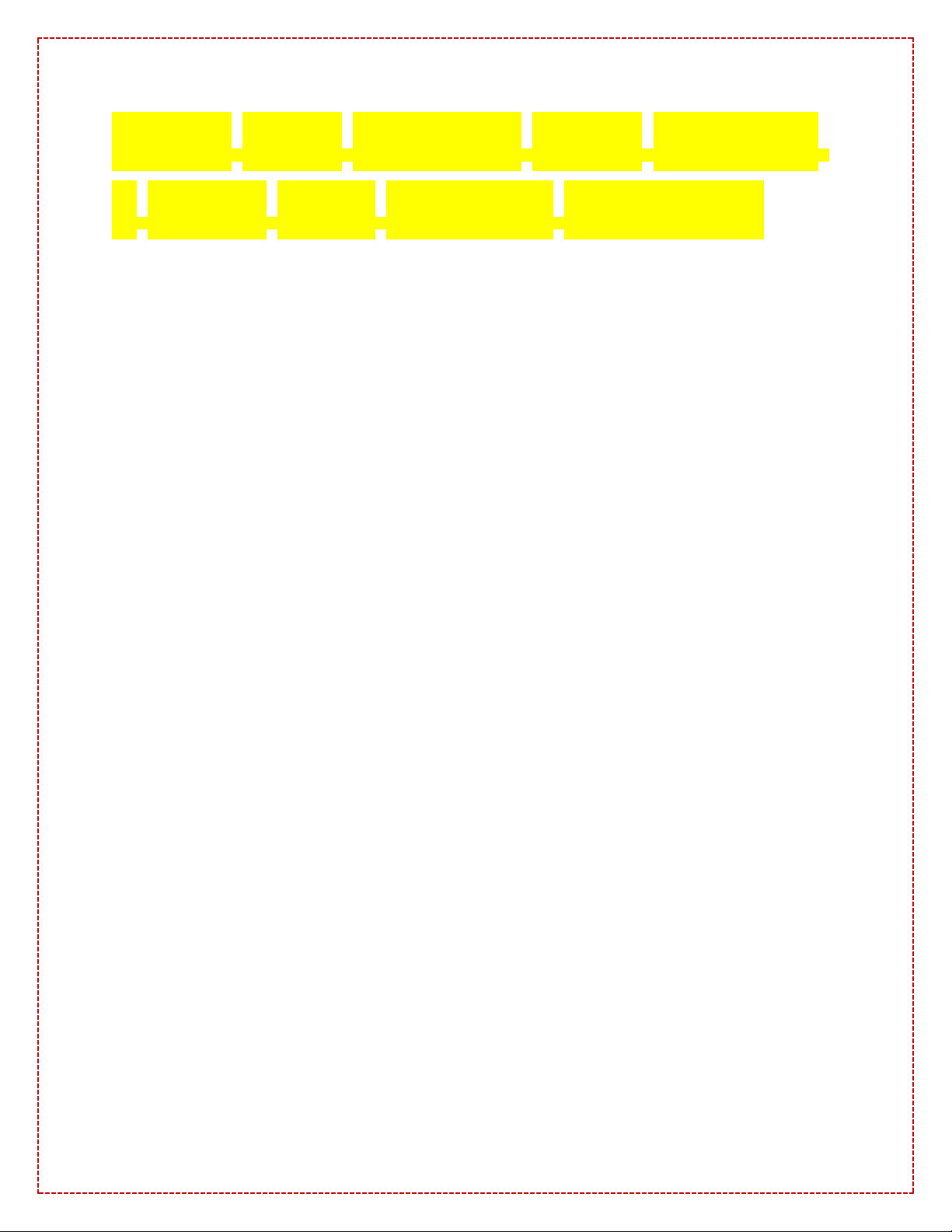
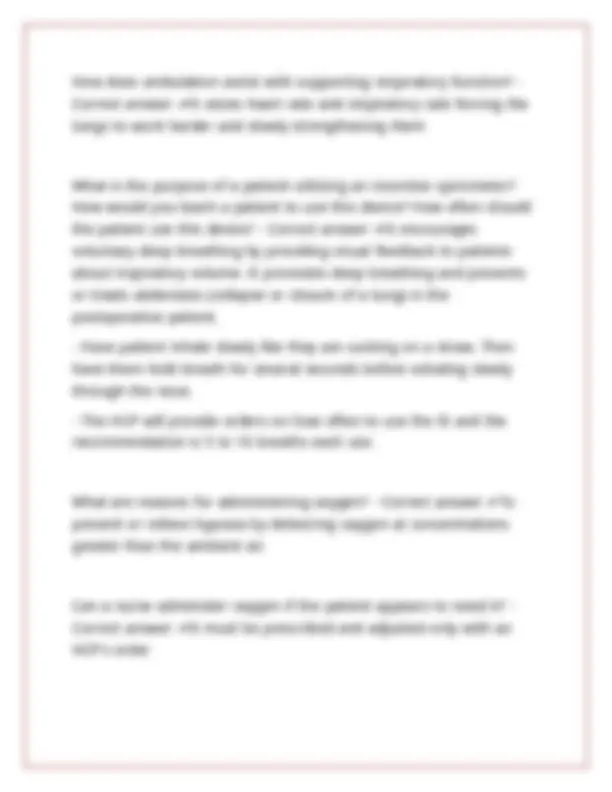
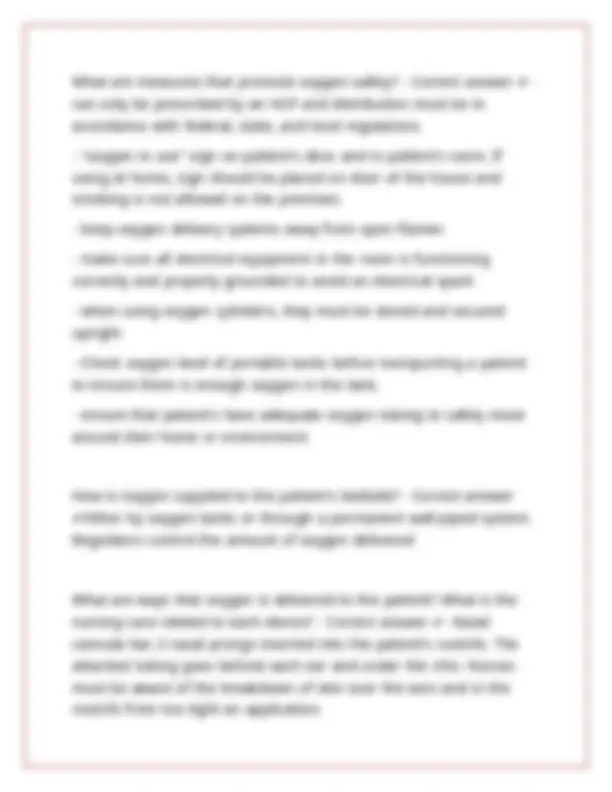
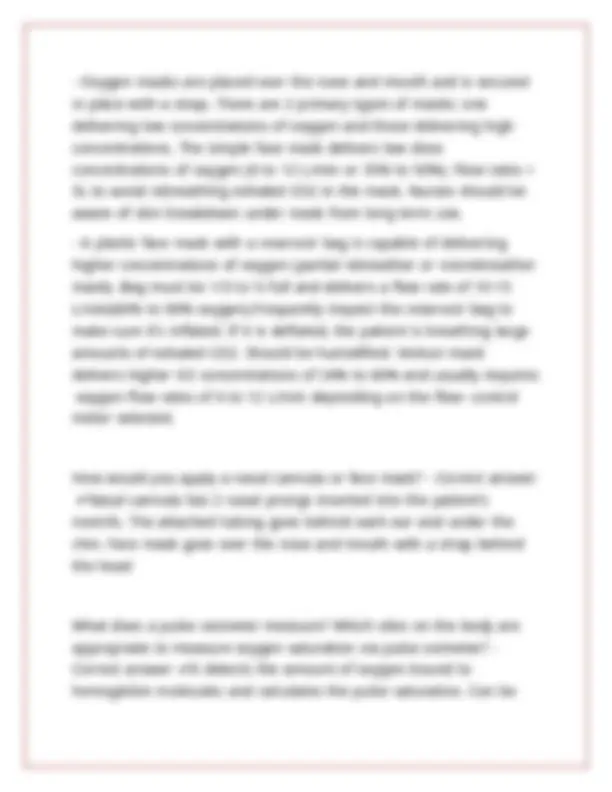
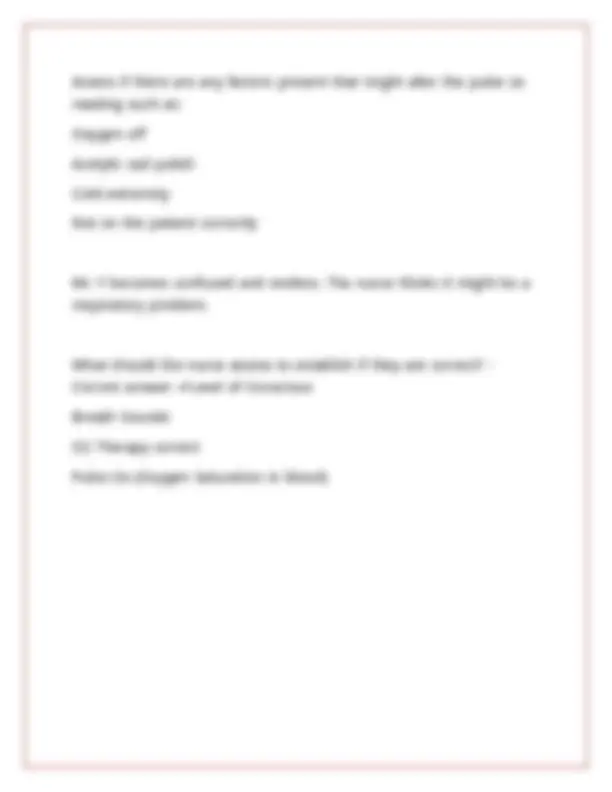


Study with the several resources on Docsity

Earn points by helping other students or get them with a premium plan


Prepare for your exams
Study with the several resources on Docsity

Earn points to download
Earn points by helping other students or get them with a premium plan
Community
Ask the community for help and clear up your study doubts
Discover the best universities in your country according to Docsity users
Free resources
Download our free guides on studying techniques, anxiety management strategies, and thesis advice from Docsity tutors
RNSG 1105 nursing skills module 8 Exam with verified solutions
Typology: Exams
1 / 8

This page cannot be seen from the preview
Don't miss anything!





How [] does [] coughing [] assist [] with [] supporting [] respiratory [] function? [] - [] Correct [] answer [] ✔Coughing [] Permits [] patient [] to [] remove [] secretions [] from [] both [] upper [] and [] lower [] airways
What [] is [] the [] difference [] in [] pursed-lip [] breathing [] and [] deep [] breathing? [] How [] would [] you [] teach [] a [] patient [] to [] perform [] each [] of [] these? [] (only [] focus [] on [] pursed-lip [] and [] deep [] diaphragmatic [] breathing, [] not [] on [] the [] others) [] - [] Correct [] answer [] ✔Pursed [] lip [] breathing [] involves [] deep [] inspiration [] and [] prolonged [] expiration [] through [] pursed [] lips [] to [] prevent [] alveolar [] collapse. [] It [] is [] used [] to [] improve [] exercise [] tolerance. [] Patient [] sits [] up [] while [] you [] instruct [] them [] to [] take [] a [] deep [] breath [] and [] exhale [] slowly [] as [] if [] blowing [] through [] a [] straw. [] Diaphragmatic [] breathing [] is [] useful [] for [] patients [] with [] pulmonary [] disease, [] postoperative [] patients, [] and [] women [] in [] labor [] to [] promote [] relaxation [] and [] provide [] pain [] control. [] It [] requires [] a [] patient [] to [] relax [] intercostal [] and [] accessory [] respiratory [] muscles [] while [] taking [] deep [] inspirations. [] The [] patient [] places [] one [] hand [] flat [] below [] the [] breastbone [] (upper [] hand) [] and [] the [] lower [] hand [] flat [] on [] the [] abdomen. [] Ask [] them [] to [] inhale [] slowly, [] making [] the [] abdomen [] push [] out [] and [] moving [] the [] lower [] hand [] outward. [] When [] the [] patient [] exhales, [] the [] abdomen [] goes [] in. [] The [] patient [] practices [] it [] initially [] in [] the [] supine [] position [] then [] while [] sitting [] and [] standing. A [] HCP [] ordered: [] T,C, [] DB [] q [] 2 [] h. [] What [] does [] this [] mean? [] How [] often [] is [] this [] usually [] performed? [] - [] Correct [] answer [] ✔Turn, [] cough, [] deep [] breathing [] every [] 2 [] hours. [] Turn [] the [] patient [] assists [] with [] ventilation [] and [] redistribution [] of [] pulmonary [] blood [] flow [] and [] direct [] them [] to [] cough [] every [] 2 [] hours [] permits [] patient [] to [] remove [] secretions [] from [] both [] upper [] and [] lower [] airways [].
What [] are [] measures [] that [] promote [] oxygen [] safety? [] - [] Correct [] answer [] ✔- [] can [] only [] be [] prescribed [] by [] an [] HCP [] and [] distribution [] must [] be [] in [] accordance [] with [] federal, [] state, [] and [] local [] regulations
Which [] position [] allows [] maximum [] chest [] expansion [] in [] a [] patient [] who [] is [] on [] bed [] rest. [] - [] Correct [] answer [] ✔Tripod [] or [] Orthopneic [] - [] the [] position [] assumed [] by [] patients [] with [] orthopnea, [] namely [] sitting [] up [] leaning [] forward [] on [] several [] pillows. Why [] might [] a [] patient [] be [] a [] candidate [] for [] oxygen [] therapy? [] - [] Correct [] answer [] ✔With [] hypoventilation, [] he [] could [] have [] inadequate [] transport [] of [] oxygen [] and [] develop [] hypoxemia. How [] is [] the [] nurse [] going [] to [] regulate [] the [] flow [] rate [] of [] oxygen [] to [] 2liters/min? [] - [] Correct [] answer [] ✔Use [] the [] xmas [] tree [] to [] regulate [] the [] flow What [] is [] the [] purpose [] of [] humidification? [] - [] Correct [] answer [] ✔to [] prevent [] drying [] of [] the [] nose [] and [] mouth [] with [] a [] nasal [] cannula What [] is [] a [] normal [] pulse [] oximetry [] reading? [] What [] reading [] level [] would [] cause [] concern [] for [] hypoxemia? [] - [] Correct [] answer [] ✔Normal [] saturation [] = [] 95% [] - [] 100%. []
Assess [] if [] there [] are [] any [] factors [] present [] that [] might [] alter [] the [] pulse [] ox [] reading [] such [] as: Oxygen [] off Acetylic [] nail [] polish Cold [] extremity Not [] on [] the [] patient [] correctly Mr. [] Y [] becomes [] confused [] and [] restless. [] The [] nurse [] thinks [] it [] might [] be [] a [] respiratory [] problem. What [] should [] the [] nurse [] assess [] to [] establish [] if [] they [] are [] correct? [] - [] Correct [] answer [] ✔Level [] of [] Conscious Breath [] Sounds O2 [] Therapy [] correct Pulse [] Ox [] (Oxygen [] Saturation [] in [] blood)